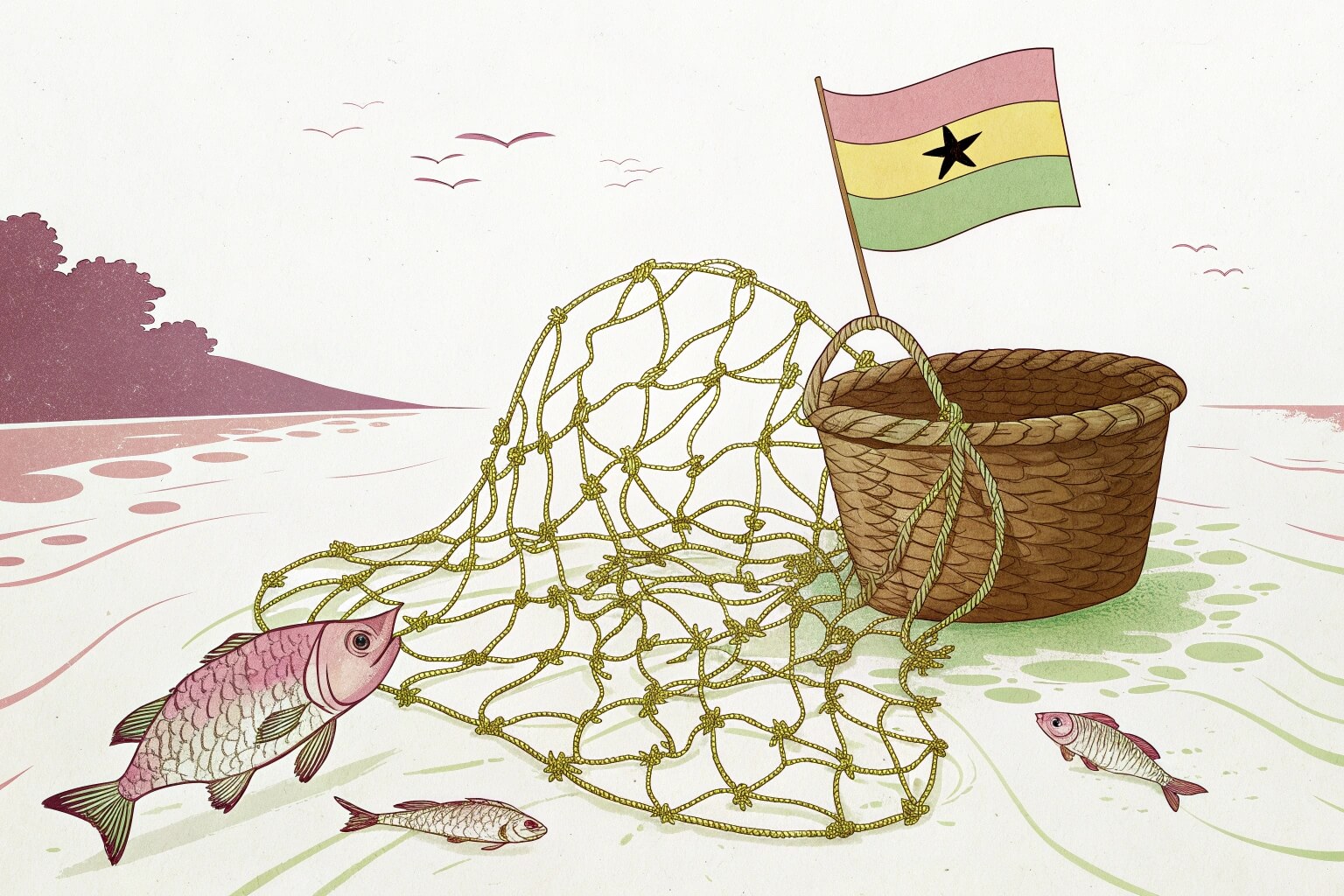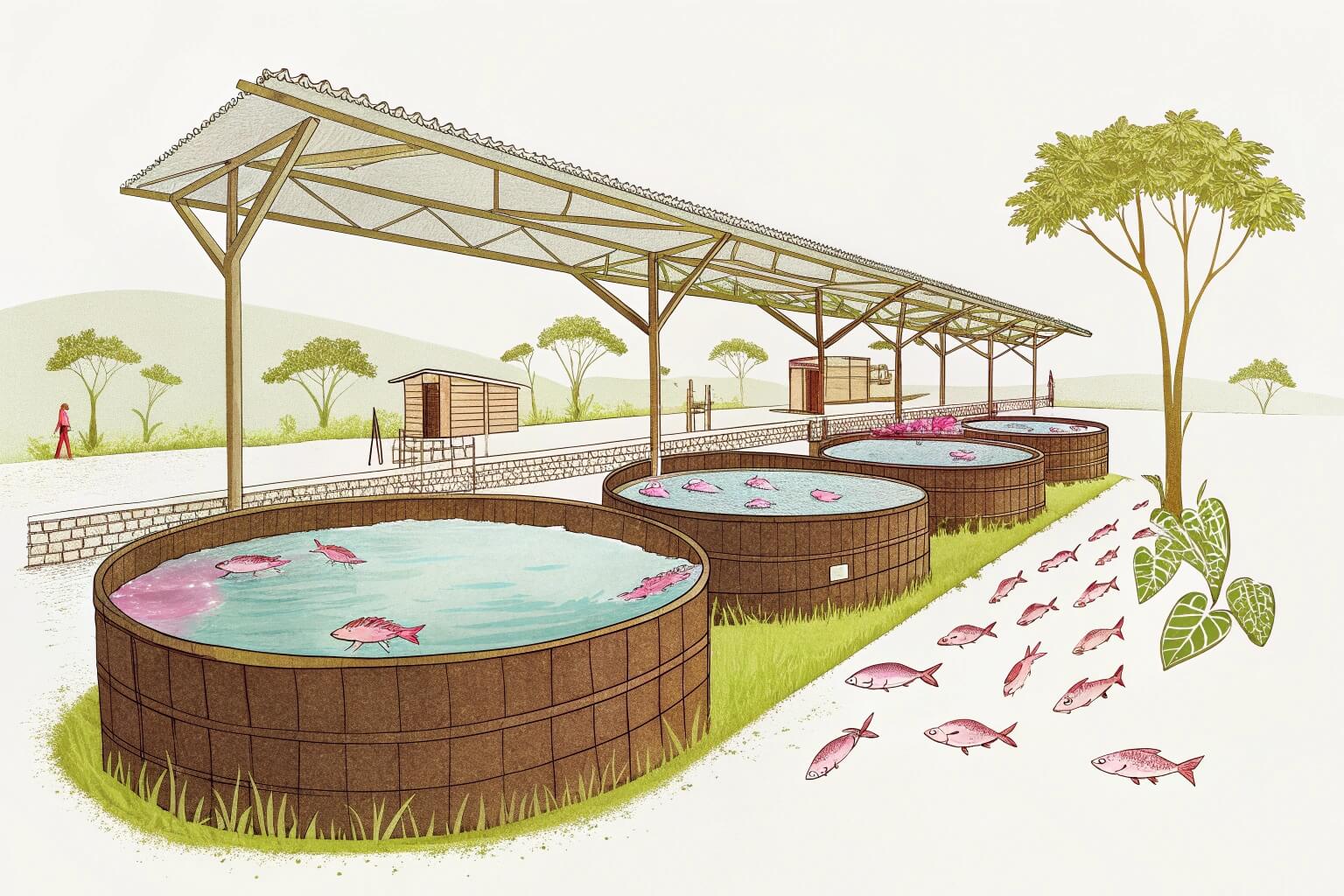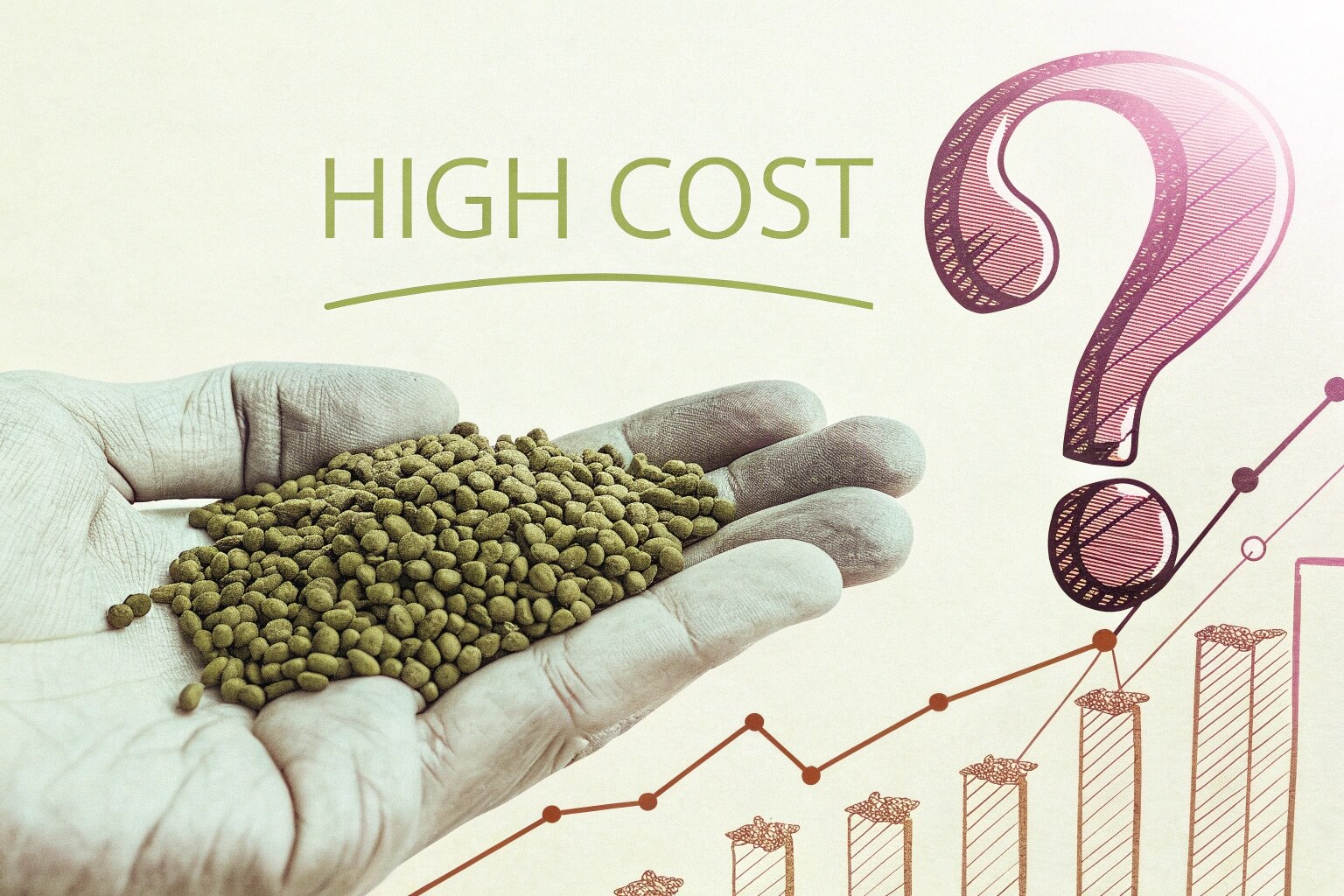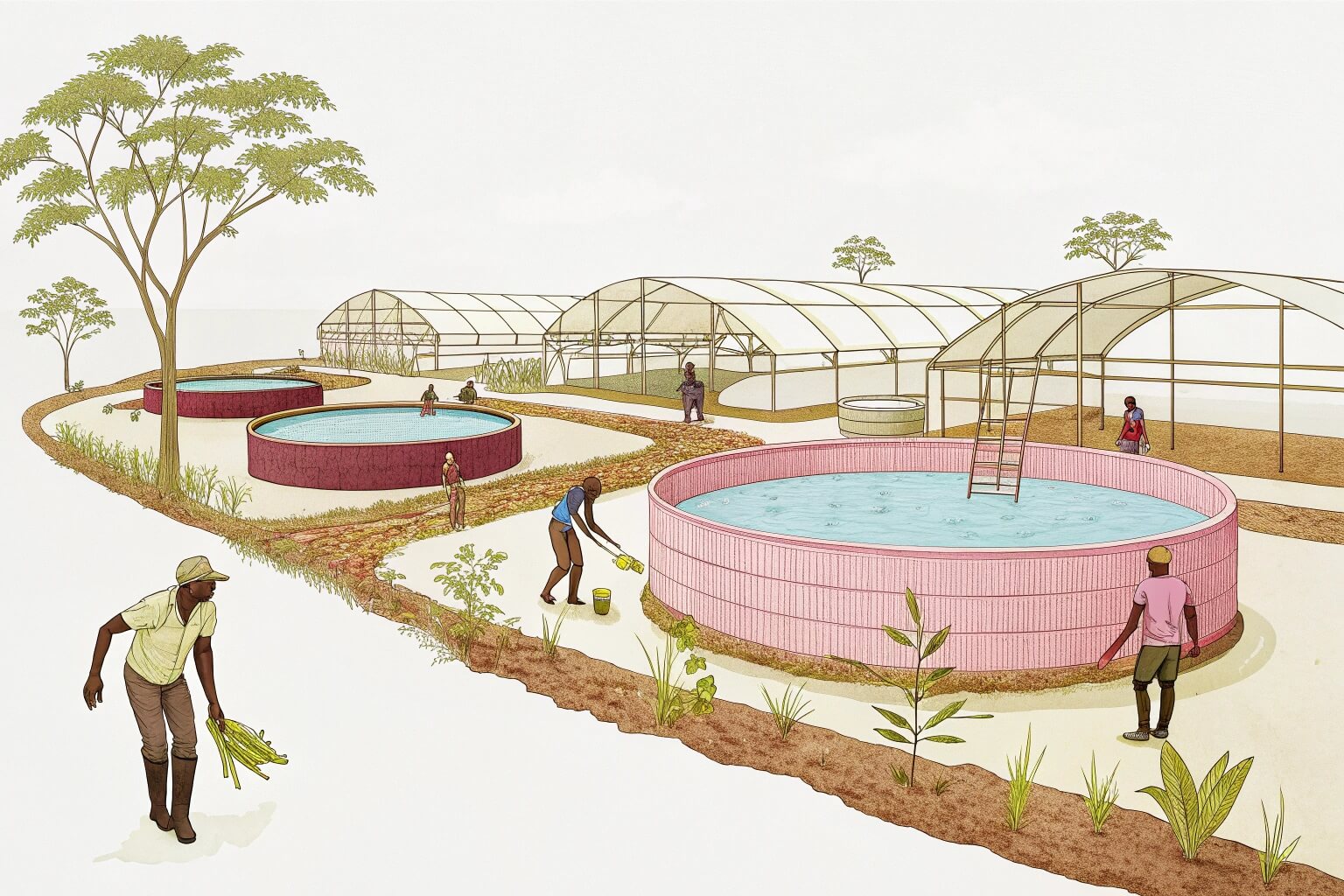Why does Ghana struggle to achieve fish sufficiency?
Ghana's waters are rich, yet fish are scarce. This impacts livelihoods and food security. Understanding the core issues is the first step to finding sustainable solutions for Ghana's fishing industry.
Ghana faces challenges like overfishing, outdated methods, and pollution, hindering its ability to meet local fish demand. Addressing these is key to boosting self-sufficiency and ensuring a stable food supply for the nation.

It's clear that Ghana's journey to fish sufficiency is complex. Many factors contribute to the current situation, and understanding each one is important. Let's explore these challenges and potential solutions in more detail to see how we can move forward.
What are the problems facing fishing in Ghana?
The fishing sector in Ghana is up against some tough challenges.These problems don't just affect the fishers; they ripple through the entire economy.Identifying these specific issues helps us target effective responses.
Key problems include overexploitation of fish stocks, the use of illegal and destructive fishing practices, weak governance, and significant post-harvest losses. These combine to undermine the sustainability and productivity of Ghana's fisheries.

When I look at the fishing industry in Ghana, I see a mix of old traditions and new pressures. Overfishing is a big one. Too many boats are chasing too few fish. This isn't just about numbers; it's about the health of the ocean. We're taking out fish faster than they can reproduce. Then there's the gear. Some methods, like light fishing or using nets with tiny mesh sizes, catch everything, including young fish that haven't had a chance to grow and breed. This is like eating your seed corn; it hurts future harvests. Pollution also plays a part, from plastics to chemical runoff, damaging the marine environment1 where fish live and breed. And it's not just about what happens at sea. Once the fish are caught, a lot can be lost before they even get to market due to poor handling and lack of cold storage. These aren't simple problems with simple fixes, but recognizing them is the first step. We need better management, stronger enforcement of rules, and support for fishers to adopt more sustainable practices. It’s a tough road, but one we must travel for the future of Ghana's fisheries and the people who depend on them.
| Problem Category | Specific Issues | Impact on Fisheries |
|---|---|---|
| Resource Exploitation | Overfishing, catching juvenile fish2 | Depleted stocks, reduced future catches |
| Fishing Practices | Illegal methods (dynamite, light), small mesh nets | Habitat destruction, biodiversity loss |
| Environmental Factors | Pollution (plastics, chemicals) | Damaged marine ecosystems, fish health |
| Post-Harvest Issues | Poor handling, lack of cold storage | Spoilage, reduced income, food waste |
| Governance & Management | Weak enforcement, insufficient regulations | Unsustainable practices persist |
How does overfishing impact Ghana's fish stocks?
Overfishing drastically reduces the fish populations. When we catch too many adult fish, there aren't enough left to reproduce and replenish the stocks. This leads to a decline in the overall number and size of fish available, making it harder for fishers to make a living and threatening the long-term health of the marine ecosystem3.
What are the consequences of illegal fishing methods?
Illegal fishing methods, such as using dynamite or poison, indiscriminately kill marine life and destroy habitats like coral reefs. Small mesh nets catch juvenile fish, preventing them from maturing and breeding. This not only depletes fish stocks but also damages the broader marine environment, impacting biodiversity4 and the livelihoods of responsible fishers.
Why is post-harvest loss a significant issue?
Significant amounts of fish are lost after being caught due to a lack of proper handling, storage, and transportation facilities, especially refrigeration. This spoilage means less fish reaches consumers, reducing food availability and income for fishers. It's a waste of a valuable resource that Ghana cannot afford, especially when trying to achieve fish self-sufficiency5.
Is fish farming profitable in Ghana?
Many wonder if putting money into fish farming in Ghana is a good idea. The need for fish is high, but success isn't guaranteed. Understanding the profit potential requires a close look at the details.
Fish farming in Ghana can be profitable, especially with species like tilapia and catfish. However, success depends heavily on good management, access to quality inputs like feed and fingerlings, and stable market prices.

From what I've seen and heard, fish farming6, or aquaculture, holds real promise in Ghana. The demand for fish is consistently high, and the wild catch can't always meet it. This gap creates an opportunity for farmers. Tilapia is a popular choice because it grows relatively quickly and is well-liked by consumers. Catfish is another good option. But it's not a get-rich-quick scheme. The initial investment can be considerable – you need ponds, good water supply, quality fingerlings, and, crucially, feed, which is often the biggest ongoing cost. Market prices can also fluctuate, and disease outbreaks can wipe out a whole stock if not managed carefully. I've talked to farmers who are doing well; they pay close attention to their operations, manage their costs effectively, and have found reliable buyers. They often emphasize the importance of technical knowledge. It's not just about throwing fish in a pond; it's about understanding water quality, nutrition, and disease prevention. So, yes, it can be profitable, but it requires dedication, skill, and a bit of business savvy. The government and research institutions are also playing a role by providing training and support, which is helping to improve practices and outcomes for farmers.
| Factor Affecting Profitability | Description | Importance |
|---|---|---|
| Species Selection7 | Choosing fast-growing, market-demanded species (e.g., tilapia, catfish) | High |
| Input Costs (Feed)8 | Feed is a major expense; sourcing affordable, quality feed is crucial | Very High |
| Farm Management9 | Efficient practices in water quality, stocking density, disease control | High |
| Market Access & Price | Reliable buyers and fair market prices for harvested fish | High |
| Technical Know-how | Understanding of aquaculture principles and best practices | Medium |
| Initial Investment | Costs for pond construction, equipment, and initial stock | Medium |
What are the main costs in Ghanaian fish farming?
The main costs typically include pond construction or acquisition10, purchasing high-quality fingerlings, fish feed (which can be up to 60-70% of operational costs), labor, and water management (pumping, aeration). Disease prevention and treatment can also add to expenses.
Which fish species are most profitable for farming in Ghana?
Tilapia11 and African Catfish12 are generally considered the most profitable species for aquaculture in Ghana. They are well-adapted to local conditions, have established markets, and relatively good growth rates. There's also growing interest in farming other species like shrimp, but these often require more specialized knowledge and investment.
How does market access affect profitability?
Good market access is crucial. Farmers who can sell their fish easily and at fair prices13 are more likely to be profitable. This means having connections to buyers, whether they are local markets, restaurants, or larger distributors. Lack of access or reliance on too few buyers can lead to lower prices and reduced profits.
What is the major problem faced in fish farming?
Fish farming seems like a great solution, but it has its own set of big hurdles. These hurdles can stop a promising farm in its tracks. Pinpointing the main problem helps focus efforts to overcome it.
The high cost and inconsistent quality of fish feed are often cited as the major problems faced in fish farming in Ghana. Feed can represent the largest operational expense, significantly impacting profitability.

When I talk to fish farmers in Ghana, one issue comes up more than any other: the cost of feed. It’s a huge part of their expenses, sometimes more than half. Good quality feed is essential for the fish to grow well and stay healthy, but it’s often expensive, and much of it is imported. This makes farmers vulnerable to price changes and supply issues. Sometimes, the quality of locally available feed can also be inconsistent, which affects fish growth and the farm's overall productivity. It's a real challenge because if you try to cut corners on feed, your fish won't grow as fast or might get sick, and then you lose money anyway. Farmers are always looking for ways to manage this, perhaps by trying to find local ingredients to make their own feed, but that takes knowledge and resources too. Another big problem is access to good quality fingerlings14 – the baby fish. If you start with poor quality stock, you're already at a disadvantage. And then there's disease management. An outbreak can be devastating. So, while feed is often the biggest single headache, it's part of a larger picture of needing reliable, affordable inputs and good technical support to make fish farming truly thrive.
| Challenge Area | Specific Problem | Impact on Farmers |
|---|---|---|
| Input Costs | High cost & inconsistent quality of fish feed15 | Major operational expense, reduces profitability |
| Expensive or poor quality fingerlings | Slow growth, higher mortality, lower yield | |
| Disease Management | Outbreaks, lack of diagnostic/treatment options | Stock losses, increased costs, farm failure risk |
| Technical Knowledge | Limited access to training and extension services | Suboptimal practices, lower efficiency |
| Access to Finance | Difficulty securing loans for setup or expansion | Limits scale and adoption of better technology |
| Market Issues | Price volatility, limited access for smallholders | Unpredictable income, difficulty in planning |
Why is fish feed so expensive in Ghana?
Much of the high-quality fish feed, or its key ingredients like fishmeal and soybean meal16, is imported. This means costs are affected by international prices, exchange rates, and import duties. Local production of quality feed is still developing and faces challenges in sourcing consistent, affordable raw materials.
How does feed quality impact fish farming operations?
Poor feed quality leads to slower growth rates in fish, lower feed conversion ratios17 (meaning more feed is needed to produce a kilogram of fish), and can increase susceptibility to diseases. This directly reduces the farm's output and profitability. Consistent, high-quality feed is vital for efficient production.
Are there solutions to the fish feed problem?
Efforts are underway to develop more affordable and effective local feed formulations using locally available ingredients like cassava, maize by-products, or insect meal. Research into better feed management practices and government support for local feed manufacturing could also help alleviate this problem. Some farmers also explore integrated farming systems18 to supplement feed.
What is the current state of aquaculture in Ghana?
We know wild fishing is struggling, so what's happening with fish farming? Is it growing, or facing too many obstacles to make a real difference? A clear view of aquaculture's current status is needed.
Aquaculture in Ghana is a growing sector with significant potential, primarily focused on tilapia and catfish. While it contributes increasingly to fish supply, it still faces challenges in scaling up, including access to finance, quality inputs, and technical expertise.

Aquaculture in Ghana is definitely on an upward trend, and I see a lot of enthusiasm for it. The government and various organizations recognize its potential to improve food security, create jobs, and reduce the pressure on wild fish stocks. There's been a noticeable increase in the number of fish farms, from small-scale ponds to larger commercial operations. Tilapia is the star, really, with cage culture in places like Lake Volta becoming quite common. Catfish farming is also popular. However, the sector isn't without its growing pains. As I mentioned, access to affordable, high-quality feed and fingerlings remains a major constraint for many farmers. Getting the right technical knowledge and applying best practices in farm management, water quality, and disease control is also crucial, and not everyone has access to that support. Finance is another hurdle; starting or expanding a fish farm requires capital, and accessing loans can be difficult. Despite these challenges, the progress is encouraging. There's more research happening, more investment flowing in, and a greater awareness of the opportunities. I believe that with continued support, improved infrastructure, and a focus on sustainable practices19, aquaculture can play an even bigger role in Ghana's fish supply in the future. It's a vital part of the solution to achieving fish self-sufficiency.
| Aspect of Aquaculture | Current Status in Ghana | Key Challenges |
|---|---|---|
| Growth Trajectory | Growing sector, increasing number of farms | Scaling up production, sustainability |
| Primary Species | Tilapia (dominant), African Catfish | Diversification to other viable species |
| Common Systems | Pond culture (small-scale), Cage culture (Lake Volta) | Adoption of more efficient systems like RAS |
| Contribution | Increasing contribution to domestic fish supply | Still below national demand, import reliance |
| Support Structure | Government initiatives (MOFAD)20, NGO & research involvement | Access to finance, consistent technical support |
| Input Availability | Challenges with cost/quality of feed & fingerlings | Developing local, sustainable input industries |
What types of aquaculture systems are common in Ghana?
Pond culture is the most common system, especially for small to medium-scale farmers. Cage culture, particularly for tilapia in Lake Volta, has also become significant for larger commercial operations. Recirculating Aquaculture Systems (RAS)21 are less common due to higher initial investment and technical requirements but are gaining interest for their efficiency.
What role does the Ghanaian government play in promoting aquaculture?
The Ghanaian government, through the Ministry of Fisheries and Aquaculture Development22 (MOFAD), actively promotes aquaculture. This includes policy development, providing extension services and training to farmers, supporting research, and sometimes facilitating access to inputs or credit schemes. They aim to increase domestic fish production through sustainable aquaculture.
What is the potential for aquaculture to meet Ghana's fish demand?
Aquaculture has immense potential to help meet Ghana's fish demand and reduce its reliance on imports. While current production is still below the national requirement, the sector is growing. With continued investment in research, technology, infrastructure, and farmer support, aquaculture can significantly increase its contribution to the nation's fish supply and food security23.
Conclusion
Ghana's path to fish sufficiency involves tackling overfishing and boosting sustainable aquaculture. Addressing feed costs, improving techniques, and strong policies are key to a thriving, self-reliant fishing future for the nation.
-
Learning about threats to the marine environment can inform better conservation strategies and protect vital ecosystems. ↩
-
Understanding the impact of overfishing is crucial for sustainable fishing practices and marine conservation efforts. ↩
-
Learning about the components of a healthy marine ecosystem can help in protecting and restoring these vital environments. ↩
-
Learning about the importance of biodiversity can inspire actions to protect marine environments and ensure sustainable fishing for future generations. ↩
-
Learning about strategies for fish self-sufficiency can support local economies and food security. ↩
-
Explore the potential of fish farming in Ghana and how it can meet the growing demand for fish while providing economic opportunities. ↩
-
Explore this link to discover which species can maximize your aquaculture profits and meet market demands. ↩
-
Learn effective strategies to minimize feed expenses, a major cost in aquaculture, ensuring better profitability. ↩
-
Find out essential management practices that can enhance productivity and profitability in aquaculture farming. ↩
-
Learning about pond construction can optimize your aquaculture setup, leading to better yields and efficiency in operations. ↩
-
Explore the advantages of Tilapia farming, including profitability and adaptability, to enhance your aquaculture knowledge. ↩
-
Learn about the profitability and market demand for African Catfish, a key species in Ghana's aquaculture industry. ↩
-
Exploring the concept of fair prices can provide insights into sustainable farming practices and economic stability. ↩
-
Accessing quality fingerlings is crucial for successful fish farming; this resource can guide farmers to reliable suppliers. ↩
-
Understanding the impact of fish feed quality can help farmers make informed decisions to improve profitability. ↩
-
This link will help you understand the importance of these ingredients in fish feed and their impact on aquaculture nutrition. ↩
-
Understanding feed conversion ratios is crucial for optimizing fish farming efficiency and profitability. ↩
-
Learn how integrated farming systems can optimize resource use and improve sustainability in agriculture. ↩
-
Learning about sustainable practices can enhance fish farming efficiency and environmental responsibility, vital for future growth. ↩
-
This resource will shed light on the vital role of government support in enhancing the aquaculture sector in Ghana. ↩
-
Discover the efficiency and potential of RAS in aquaculture, despite its higher initial costs. ↩
-
Discover the various initiatives and programs that the Ministry is implementing to boost the aquaculture sector in Ghana. ↩
-
This link will help you discover how aquaculture can enhance food security and reduce import dependency in Ghana. ↩